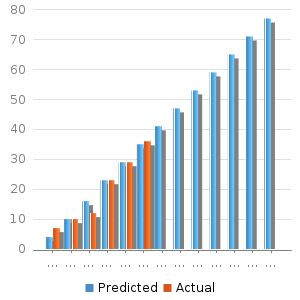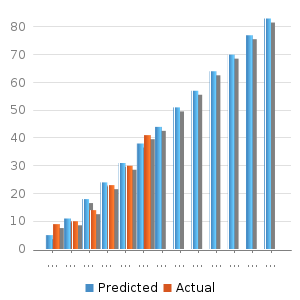This is the essence of a report I wrote up for one of my customers, with recommendations on what to do about Atlassian's move to Cloud.
I make this available because a lot of companies are having to evaluate the alternatives right now, and may benefit from seeing a worked example that includes short-term discounts. This company is on 50-user Jira and Confluence.
If you spot any factual errors or flaws in my logic, please let me know. I regret I cannot make available the spreadsheet the numbers are based on because it contains a Partners-only pricing table. Please contact me if you'd like a similar analysis done for your business.
Dear $CLIENT,
Atlassian are discontinuing their 'Server' (self-hosted) product line in favor of the Cloud alternatives. This affects us, as we are using both Jira Server and Confluence Server.
Atlassian's timeline is:
- : no new license sales. Yearly maintenance prices will increase.
- : no further license upgrades.
- : support ends
Atlassian is pushing the majority of customers to Cloud. The 'Data Center' (DC) product line, a clustered edition for large instances, will still be available, but its license tier only starts at 500 users and its price will be increasing by 15-180%.
Current/Past Pricing (2020)
In 2020 we paid $14,476 for Jira and Confluence:
- $2,600 to renew Jira's 50 user license
- $2,000 to renew Confluence's 50 user license
- $2,763 for various plugins (notably Tempo, Balsamiq, Gliffy, Scroll)
- $3,504 for AWS hosting (two m4.xlarge servers)
- $3,600 for a support and upgrades contract (Red Radish Consulting)
The Jira/Confluence renewal prices were artificially low, as we are on an 'advantaged' (grandfathered) plan that escaped the 2019 price increases.
Summary: Future Pricing
The three options Atlassian make available to us are:
- Stay with Server as long as possible, then migrate to DC (option 1).
- Migrate to DC soon to get ourselves a 'advantaged' (grandfathered) license (option 2).
- Migrate to Cloud (option 3).
Here are the anticipated costs for each option, taking into account projected user growth, various short-term discounts, as well as the AWS hosting and support contract costs of self-hosting:
We see that:
- DC is not a financially realistic option, as its minimum user tier is 500 users.
- Comparing the "Server" row with "Cloud (base)" to ignore short-term discounts, we see a relatively minor (10-20%) price increase of moving to Cloud.
Recommendations
We only have two real options here: migrate to Cloud, or migrate to another product entirely.
This is not a great situation, because currently Atlassian Cloud is a rather weak product. It has many limitations compared to its Server counterpart, a weaker plugin ecosystem, as well as performance and UI problems. See my post Goodbye to Atlassian Server products for an overview.
Additionally, the migration pathways for many plugins are unclear. Notably, Tempo has as yet no Server to Cloud data importer (it is apparently being worked on).
My recommendation is therefore to begin planning a migration to Cloud in 2023. The delay can only benefit us by:
- give Atlassian time to battle-test and improve its Cloud migration tools.
- give plugin vendors like Tempo time to sort out their migration pathways
- give Atlassian time to improve their core products.
Atlassian are giving significant short-term discounts to incentivize against waiting, but even with discounts the prices are comparable, and the cost of a bad migration due to Atlassian's immature tooling would be huge.
If we delay a Cloud migration till 2023, in the meanwhile we should follow the steps suggested below: 1) renew products before Feb 2, 2021 to beat the price increases, 2) upgrade our user tier to 100 users before Feb 2, 2022, after which it would be too late.
My second recommendation: since we are being forced into a disruptive migration, we should evaluate alternative products, Cloud and non-Cloud, commercial and open source. Atlassian has many competitors these days, and the competition is likely to be even stronger in 2023. See https://www.goodbyeserver.org and https://bye-bye-server.com/ for some resources.
Future Pricing Calculations
We now show how the numbers above are derived. Note: the primary source of calculations is a spreadsheet, which I unfortunately cannot publish due to containing Partners-only information:
How many users?
Before considering costs, we need to know how many users we expect to cater for in future. By examining the 'Created date' of accounts, we can track how many user accounts were created per year, and extrapolate that into the future.
| Jira | Confluence | ||||||||||||||||||||||||||||||||||||||||||||||||||||||||||||||||||||||||||||||||||||
|---|---|---|---|---|---|---|---|---|---|---|---|---|---|---|---|---|---|---|---|---|---|---|---|---|---|---|---|---|---|---|---|---|---|---|---|---|---|---|---|---|---|---|---|---|---|---|---|---|---|---|---|---|---|---|---|---|---|---|---|---|---|---|---|---|---|---|---|---|---|---|---|---|---|---|---|---|---|---|---|---|---|---|---|---|---|
Jira has a 50 User license, with 36 license slots used as of . License use is increasing linearly each year 
This shows that if current growth continues we will hit our 50-user license limit in 2022, and will be forced into Jira's next user tier, 100 users. | Confluence is also on a 50 user license, with 41 license slots used as of . Growth appears linear. 
As with Jira, Confluence will hit its 50 user limit in 2022. |
Hosting Costs
When comparing self-hosted options with Cloud, we need to take into account our own hosting expenses (the cost of two m4.xlarge servers) and maintenance contract fees.
These costs are included in the 'Server' and 'DC' totals above.
Option 1: Server (for 3 more years)
2021
We are on 'advantaged' plans, and we know price increases are coming for 'advantaged' plans on 2/Feb/2021.
Jira's renewal date would be Aug 2021, and Confluence's would be May 2021.
But, but renewing early before the price increase, we can save a bit of money (renewing early does not reset the maintenance window). This is "Option 3: Renew on server early and lock in your existing price".
So at a minimum, prior to Feb 2, 2021 we should:
- Renew Jira till Jul 4, 2022, for $2,600
- Renew Confluence till Feb 2022, for $2000
- Renew plugins, whose prices are only likely to go up
2022
Jira will then be due for renewal in Aug 2022, and Confluence in May 2022.
We expect we'll need to upgrade our user tier from 50 users to 100 in 2022. However, Atlassian plan to stop selling such license upgrades after Feb 2, 2022!
So once again we must jump in early, upgrading our user tier before Feb 2, 2022 so we're not stuck on the 50 user tier forever.
So once again we must jump in early. Prior to Feb 2, 2022 we must upgrade Jira and Confluence from 50 to 100 users.
As for pricing, our 'advantaged' status will have ended on Feb 2, 2021, so the 'New price for advantaged plans' prices from the Future server pricing tables page applies:
| Jira | Confluence |
|---|---|
The costs in Jan 2022 would thus be:
- $5,500 for Jira (annual price for the 51-100 user tier)
- $4,300 for Confluence (annual price for the 51-100 user tier)
2023
A user tier upgrade resets the maintenance clock, so our 100-user licenses would expire in Jan 2023. We would again pay:
- $5,500 for Jira (annual price for the 51-100 user tier)
- $4,300 for Confluence (annual price for the 51-100 user tier)
(assuming Atlassian don't increase the prices again – something we might want to protect against by renewing for 24 months in 2022)
Our licenses last right up to Jan 2024, after which Atlassian end all support.
Server plugin licensing
Plugin licensing for Server will increase as we move from the 25-50 to 51-100 user tier:
Option 2: Data Center
The price for Data Center after Feb 1, 2021 is listed as the 'New Atlassian list price' from the future DC pricing tables:
| Jira | Confluence |
|---|---|
The problem (for us) with Data Center is that licensing only starts at 500 users. For Jira this means $42,000. For Confluence it means $27,000. The price increases flow on to plugins too. For instance, in 2021 our expenditure on plugins would go from $2,730 to $32,092:
Option 3: Move to Cloud
Which Cloud tier?
Atlassian have 4 tiers in their Cloud products: Free, Standard, Premium and Enterprise (see the Pricing page):
The differences between tiers are seen in the business end of the feature table:
Our data easily fits in the 250Gb file storage limit. Assuming GDPR / data residency is not a concern, we should do fine with the Standard tier.
Cloud pricing
Cloud pricing can be obtained from Atlassian's Cloud pricing calculator for Jira and Confluence. There is no equivalent pricing table that I can find (the Future cloud pricing tables 'New Price New License' column would apply, but there is no table for Cloud Premium). It is best to pick 'Annual' billing cycle, as this works out cheaper per year and also is required for 'loyalty discounts' (more on them below).
Loyalty Discounts
Atlassian is offering a Cloud loyalty discount for users migrating from Server/DC to Cloud. The discount schedule is:
- Before July 1, 2021: 55%
- Before July 1, 2022: 40%
- Before July 1, 2023: 20%
thereafter full price.
So our yearly pricing with Cloud would be:
| Year | Discount | Jira Tier | Jira Base Cost | Jira Cost | Confluence Tier | Confluence Base | Confluence Cost | Access Cost | Total |
|---|---|---|---|---|---|---|---|---|---|
| 2021 | 55% | 26-50 | $3,500 | $1,575 | 51-100 | $5,000 | $2,250 | $1,500 | $6,900 |
| 2022 | 40% | 51-100 | $7,000 | $4,200 | 51-100 | $5,000 | $3,000 | $3,000 | $14,400 |
| 2023 | 20% | 51-100 | $7,000 | $5,600 | 51-100 | $5,000 | $4,000 | $3,000 | $18,200 |
| 2024 | 51-100 | $7,000 | $7,000 | 101-200 | $9,000 | $9,000 | $3,000 | $26,000 | |
| 2025 | 51-100 | $7,000 | $7,000 | 101-200 | $9,000 | $9,000 | $3,000 | $26,000 | |
| 2026 | 101-200 | $13,000 | $7,000 | 1201-1400 | $9,000 | $9,000 | $6,000 | $39,000 | |
| 2027 | 101-200 | $13,000 | $7,000 | 1201-1400 | $9,000 | $9,000 | $6,000 | $39,000 |
(Note: figures are from Atlassian's spreadsheet. Prices for Access diverge slightly from the website)
Cloud Plugins
The table below shows the plugins we currently have, and whether there are Cloud equivalents.
Note that Cloud editions of plugins are often limited vs. their Server counterparts. So for instance, although ScriptRunner is available for Cloud, it won't support our REST API endpoints which is what we primarily use it for.
Also, each plugin available in Cloud will have its own migration story. E.g. Tempo currently has no data importer.
Cloud plugins are generally more expensive than Server. E.g. our 2021 plugin spend would go from $2,730 to $7,320:
Atlassian Access
Atlassian Access is Atlassian's centralized user database for Cloud. It is required if we wish to sync with existing LDAP. Access also provides 2FA, SSO, SAML and other advantages. Access pricing is as follows:
Please see the summary at the beginning for comparison of these three options, and my recommendations.












